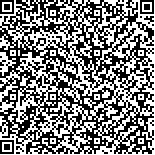Archive > Volume 47 Issue 11 > 2021,47(11):1391-1401. DOI:10.7519/j.issn.1000-0526.2021.11.008 Prev Next
Observation Characteristics of FY-4A Lightning Mapping Imager During a Severe Rainfall
- Article
- Figures
- Metrics
- Preview PDF
- Reference
- Related
- Cited by
- Materials
Abstract:
The FY-4 lightning mapping imager (LMI) can continuously observe the lightning activity, having great application potential in severe convective weather monitoring and warning. Taking the heavy rainfall process on 25 May 2019 as an example, this paper studies the observation characteristics of the convective system in different properties and evolution stages with the data of FY-4 lightning imager, ADTD (advanced time of arrival and direction) system, FY-4 infrared cloud image, radar and other conventional observation data. The study shows that in the early stage of the rapid development of convection, LMI lightning observation is ahead of ADTD lightning observation, and this advance feature lasts longer in the frontal precipitation stage. When the LMI lightning observation is located in front of the current convective cloud cluster movement at the same time, there will be obvious cloud top temperature variability in the LMI lightning distribution area in the next hour, and cumulus has a development trend. When the strongest echo on the vertical section of radar reflectivity appears to move forward, the LMI lightning observation often appears in front of the moving direction of the convective system observed by radar. At this time, the LMI lightning observation has a good early indication for the development and evolution of the convective system. When the strongest echo on the vertical section of radar reflectivity shows up quasi vertical structure, the LMI lightning observation often coincides with the radar observation of the convective system. At this time, the LMI lightning observation has a weak indication for the development and evolution of the convective system.
Keywords:
Project Supported:
Clc Number:


Mobile website









